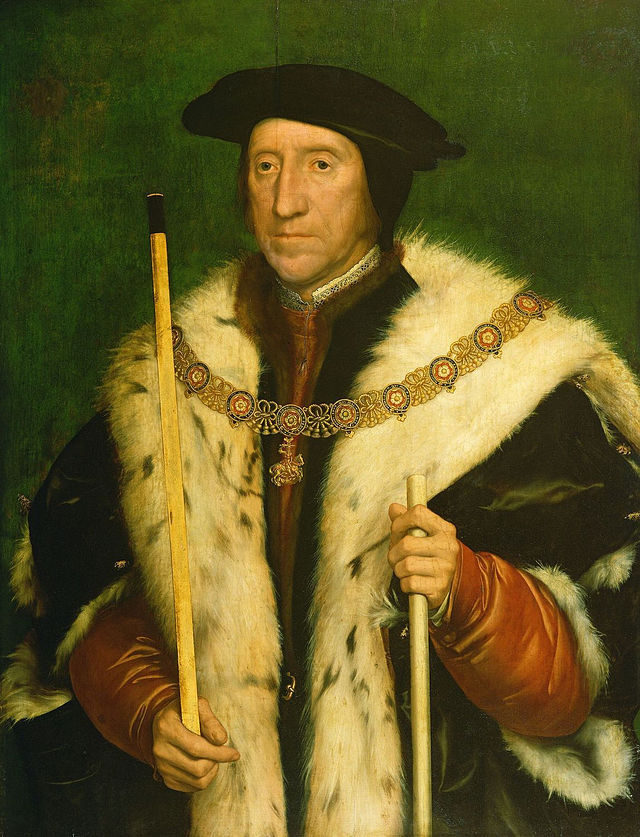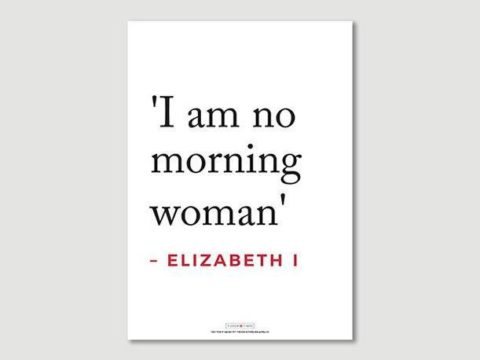James V: Life Story
Chapter 6 : The End (1540-1542)
During 1540, James had promulgated new ordinances for the army. Every man between sixteen and sixty was liable to be called out for defence, and had to be ready to muster at the named point within 24 hours of the call, armed and arrayed in a jack or brigandine (a protective corselet that covers the upper body, padded and with small metal plates sewn in to deflect arrows), together with gloves and a gorget (neck protector).
Scots armies were traditionally made up of ‘schiltrons’, that is, phalanxes of foot-soldiers in tight formation bearing extremely long spears or pikes. The weapons the ordinary men were to bring could include any of: spear, pike of six ells in length, culverins, hand bows and arrows, cross bows, halberds, axes and two handed swords. Only earls or lords could be mounted, and any horses brought by lesser men were to be used for carriage.
With the final breakdown of amity between James and Henry, it seemed that military action was likely to be necessary.
In June 1542, Thomas Howard, 3rd Duke of Norfolk, accompanied by Sir Robert Bowes, invaded Scotland at the head of an army of 8,000, including Douglas supporters. The Earl of Huntly, and Lord Home met the invaders near Kelrose, and scored a decisive victory at the Battle of Haddon Rig. Bowes, who had had charge of a party sent to harass Jedburgh, was taken prisoner, but soon released.

Following this, James sent further dispatches to England, in July and August to make peace. His overtures were not accepted, and the Duke of Norfolk mustered an army of some 20,000 that crossed the border at Berwick and set about the usual burning and pillaging around Kelso and Roxburgh.
James called his levies to meet at the Borough Muir, just as his father had done in 1513. His army numbered somewhere up to 30,000 – it is difficult to be more accurate as contemporary sources tend to exaggerate numbers. He set out towards Fala Muir (where the Battle of Pinkie would be fought some five years later), but was greeted by the news that Norfolk and his men had retreated homeward. At this point, James wanted to carry the war into the enemy camp, but his nobles refused to support him. They did not want war with England.
James was obliged to disband the majority of the troops, but retained about 18,000, who were sent to attack in the west. James himself rode with the army, but mindful of the dire consequences of his father’s death in battle, did not plan to take part himself, instead remaining at Lochmaben, about twenty miles inside the Scottish Border. He had also complained of illness in a letter to Queen Marie, which may have been another factor in him not joining the army.
The Scots crossed the border and advanced southward to cross the River Esk near Longtown. The English were surprised, having expected Haddon Rig to be followed up by a crossing on the east, but the Warden, Sir Thomas Wharton, an extremely experienced commander, rustled up a defensive body of about 3,000 and proceeded north from Carlisle.

With the numbers the Scots had, it seemed that victory was a foregone conclusion, but matters went awry. There was quarrelling and dissension amongst the Scots leaders. Lord Maxwell and Sir Oliver Sinclair both claimed to be in command. The Scots plan had been less one of a battle, and more a retaliatory raid, and, when Wharton approached on 24 th November, 1542, the Scots were not in battle array but were busy about cattle-rustling and burning of farmsteads. The Scots were trapped between the rivers Esk and Lyne.
After intense fighting, the Scots broke and attempted to flee across the Solway Moss. The English captured the Scots artillery and the royal standard – a terrible humiliation. Whilst casualties in the fighting were small, many Scots were drowned in the Moss, and some 1,200 were taken prisoner, including the Earls of Cassilis and Glencairn and Lords Maxwell and Fleming.
Nevertheless, this defeat need not have been a worse outcome from Scotland than many of the other Border skirmishes. James, although humiliated by the loss of his royal standard, and many of his nobles, could have rallied and continued with his reign – England did not have the resources to occupy and subdue Scotland for the long term. James, however, was not just sick, he was dying.

He rode from Lochmaben to Linlithgow, where Queen Marie was awaiting the birth of their third child, then on to his favourite palace at Falkland. He heard the news of his daughter’s birth on 8th December, but died on the night of the 14 th – 15th or possibly 15th – 16th of December. Chroniclers liked to say he died of a broken heart, following the misery of defeat at Solway Moss, but the truth is more prosaic – he died of that perennial curse of soldiers, dysentery, or possibly cholera.
The last words ascribed to him (although they are probably apocryphal) are ‘It cam’ wi a lass, and it’ll gang wi’ a lass’, reference to the Stewarts’ inheritance of the throne through Marjorie, daughter of Robert the Bruce. He was aged thirty. James was buried at the Abbey of Holyrood, together with Queen Madeleine and his sons by Marie of Guise.
Conclusion
James V had been an effective king for the fourteen years of his personal rule. He was not as personally popular with his nobles as James IV had been, seeming to have more of the suspicious temperament (not without reason!) of his grandfather, James III. Had he not died so prematurely, it is likely that he and Queen Marie would have had more sons, and the fate of the British Isles might have been quite different.
This article is part of a Profile on James V available for Kindle, for purchase from Amazon.
James V
Family Tree
